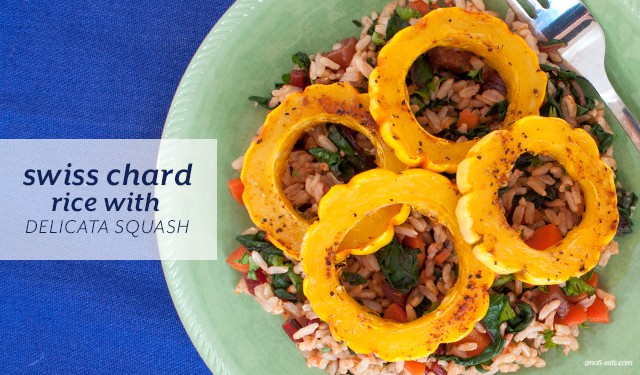
This one goes out to rice. For most of my life, white rice was in almost every dinner I made or was served. Before moving to college, I witnessed my family go through about 3 to 4 rice cookers. I find a comfort in white rice; it’s glistening fluffiness reminds me of a welcome meal when my stomach wasn’t feeling well, big family events at our favorite, now no longer Chinese restaurant, and home. The wonder of sushi later got added to that list in college.
I never questioned it’s pearly sheen or if rice really came in other colors or shades. I think I knew of brown rice, but it was just a thing that was out there, floating in the ether. When I started to change my diet and eat healthier, I noticed the suggestion to stop eating white foods, including white rice.
In order to make rice a creamy white color, the rice grain is stripped of it’s bran and polished. Removing rice’s bran takes away most of nutrients rice naturally has in it, including vitamin E, riboflavin, niacin, iron and more. It also lowers the amount of fiber rice can provide. Years ago, it was mandated that rice manufacturers add those nutrients back into rice, which is why white rice is called “enriched.”
After learning this, I decided I wanted to eat rice that didn’t need to be enriched and made the switch to brown rice. I enjoyed it’s newer, nuttier and hearty flavor. Shortly after I discovered quinoa and other whole grains, and rice got pushed further down the pantry hierarchy.
I’ve since emerged from the whirlwind of new grains, depleting my boxes of newness to see my jar of rice still sitting on the shelf, waiting patiently. It’s been long enough, and my brown rice deserves a spot on my plate.
This dish can easily be enjoyed with another grain, but I ask you to consider the humble nuttiness of brown rice. Give it a try and the rice may surprise you.
Want more Swiss Chard dishes from this series? You can find them here:
Nutrition DL: Swiss Chard
White Bean Swiss Chard Soup
Mini Crustless Swiss Chard Quiche
Swiss Chard Noodle Bowl
This recipe is part of a series called Nutrition DL. Nutrition DL gives you the download on seasonal fruits, vegetables, or pantry staples. Once you learn about the basics of the featured ingredient, I share a four recipes over four weeks to inspire and feed you with this great seasonal food. Check out other foods I’ve covered here.
Ingredients
- 1 bunch Swiss chard, stems and leaves separated
- 1 medium to large bell pepper, seeded and chopped
- 1 small to medium delicate squash, washed
- 2-3 garlic cloves, minced
- 1 handful fresh parsley, chopped
- 3 cups cooked brown rice (1 cup uncooked), I use brown jasmine rice
- 1 tsp paprika
- 2 tsp cayenne
- olive oil
- salt, to taste
Instructions
Preheat oven to 400.
Cut the delicate squash into rings, scooping out the guts and seeds with a spoon (sometimes cutting it out works well). Place rings on a foil-lined baking sheet and drizzle with olive oil, salt, and cayenne. Roast the squash for 20-30 minutes, until fork tender.
On your cutting board, fold a chard leaf in a half lengthwise. Carefully cut the stem off of the leaves and put into one bowl and put the now two leaves into another. Repeat with all of your leaves.
Once complete, assemble small stacks of leaves on the cutting board and cut the leaves in half lengthwise. If you have smaller chard leaves, skip this step. Cut the leaves in half-inch strips width wise. Repeat with remaining leaves.
Go through your chard stems and discard any broken or overly damaged stems. I usually keep 6-8 stems to use in my recipes. Cut off and discard the top, narrow parts of the stem and rough edges at the bottom, about a quarter to half-inch in. Chop chard stems and place back in bowl.
Heat olive oil in a saute pan to medium heat and add garlic, chard stems, and bell pepper when hot. Cook until vegetables are a little soft. Add in chard leaves and a pinch of salt. Cook for 3-5 minutes or until chard is wilted.
In a large bowl, combine cooked rice, parsley, and cooked chard mixture. Stir to incorporate and add paprika and salt to taste.
To serve, place rice mixture down, then top with squash rings.
